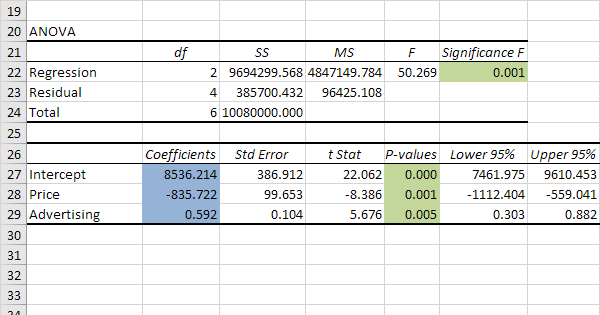
Once you click the Ok button following regression table will be created in new sheet as follows. The only thing which left is to analyze the summary output. The linear regression is similar to multiple regression. The linear regression function answers the question: "What value will a given phenomenon (dependent variable) take, depending on the value of another phenomenon (explanatory variable)?" Due to the term "linear", a method which has a way to remove the explained phenomenon and the variable explanation is precisely linear. We'd perform the task that together, in a step-by-step format. But, first you'd need to get the Data Analysis by following through these steps: file > options > add-ins> go > data analysis > ok.

Remember to double-check your data and ensure that all variables are correctly labeled and organized to produce the most accurate results possible. Finally, click “OK.” The regression output will appear in a new worksheet with information of data such as the R^2, coefficient values and more.įollowing these steps will help you conduct a regression analysis in Excel quickly and accurately. Next, select “New Worksheet Ply” from the “Output range” field to generate a new sheet to show the results of the regression analysis. Make sure to select all of the variables you want to include in the regression by holding down the ‘ctrl’ key while selecting.Ĭheck the box next to “Labels” in the “Output options” field to create a label for the regression results. Next, click the “Input X Range” button and select the independent variables you want to include in the analysis. Step 5: Input the Data Range and VariablesĬlick the “Input Y Range” button and select the dependent variable you want to analyze in the “Column” dialogue box. From there, choose “Regression” from the list of analysis tools. Highlight all of the information you want to analyze, including both the independent and dependent variables.Ĭlick on the “Data” tab in the Excel ribbon, and select the “Data Analysis” button. Now that you have enabled the “Data Analysis” Tool, you can begin selecting the data you want to use for the regression analysis. To do this, click on the “File” tab, then select “Options” and click “Add-ins.” From there, select “Excel Add-ins” in the “Manage” dropdown menu, then click “Go.” Check the box next to “Analysis Toolpak” and click “OK.” To run a regression analysis in Excel, you will need to enable the “Data Analysis” Tool in Excel. Once you have collected your data, you can begin organizing it in a spreadsheet. This may include both dependent and independent variables, as well as any other relevant data that will help you identify patterns and trends. The first step is to collect the data you will need for your regression analysis.

Here are the basic steps to follow when running a regression analysis in Excel:

Excel is a popular tool for performing regression analysis, as it offers a variety of functions and tools that make the process easier than ever before.

In business, it is commonly used to examine the effects of a particular variable or set of variables on a target outcome. Regression analysis is a statistical technique used to determine the relationship between two or more variables.


 0 kommentar(er)
0 kommentar(er)
